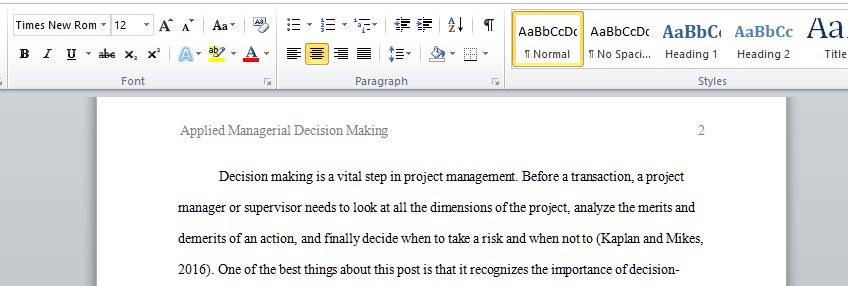Discuss applied managerial decision making in project management
Applied Managerial Decision Making in Project Management
Many different things that can affect the outcome of a project whether it is through internal or external issues like funding or legislative policies however all are possible risks that could jeopardize a project. In this discussion board we are going to discuss the importance of decision makers, like project managers, considering their attitude towards risk.
In our textbook, Making Hard Decisions, there is an example of a businessman that is beset with an issue of having a railroad company bought out from under him. In this example he attempts to then purchase majority shares to retain control of that railroad he wanted to originally purchase, however acting too quickly will raise the price costing him more and acting too slow could show his hand and ruin his plan.
In this example we first see the utility theory applied. Utility Theory is essentially a way for an individual to chart or map out ones “happiness” vs cost. Utility would be defined as the enjoyment, usefulness, or satisfaction a product or service would give oneself. As the price increases utility should increase as well. This would help you determine if you are averse to risk, risk neutral, or risk seeking. Here is where we finally meet up with the requirement of the discussion form, one needs to consider how you feel and your attitude towards risk to give it value for this utility theory.
It is also important, and required, for a Project Manager to consider their attitude towards risk for the purposes of the project plan and communicating the project risk threshold to the project team in the risk management plan.
“The risk appetites of key stakeholders on the project are recorded in the risk management plan, as they inform the details of the Plan Risk Management process. Stakeholder risk appetite should be expressed as a measurable risk threshold around each project objective.” (PMBOK). Using the Utility Theory one can then communicate the risk appetite using a visual representation to communicate project risk threshold so that decision makers can follow the project plan without exceeding the risk threshold of the stakeholders.
Answer preview:

words: 302
